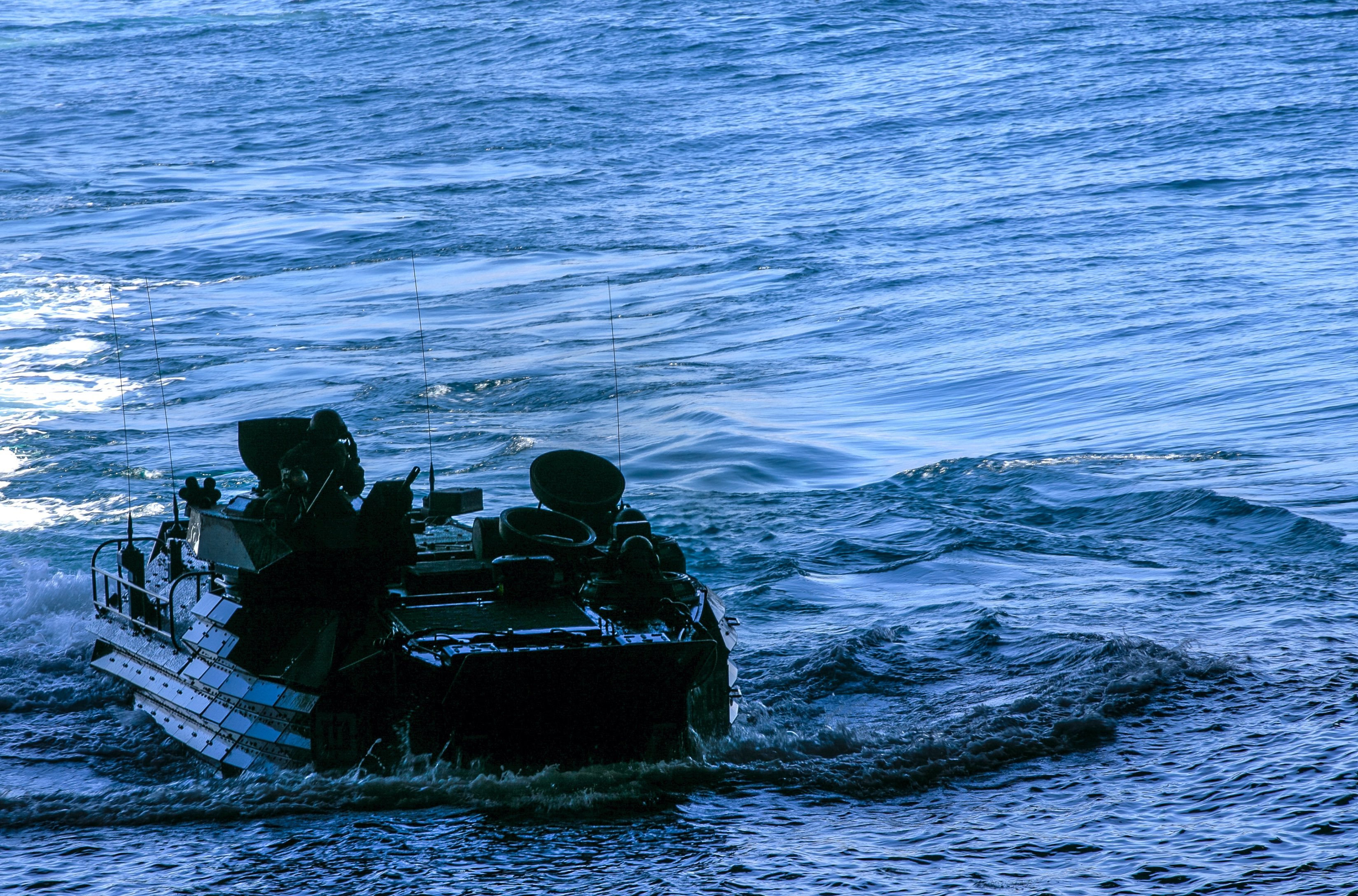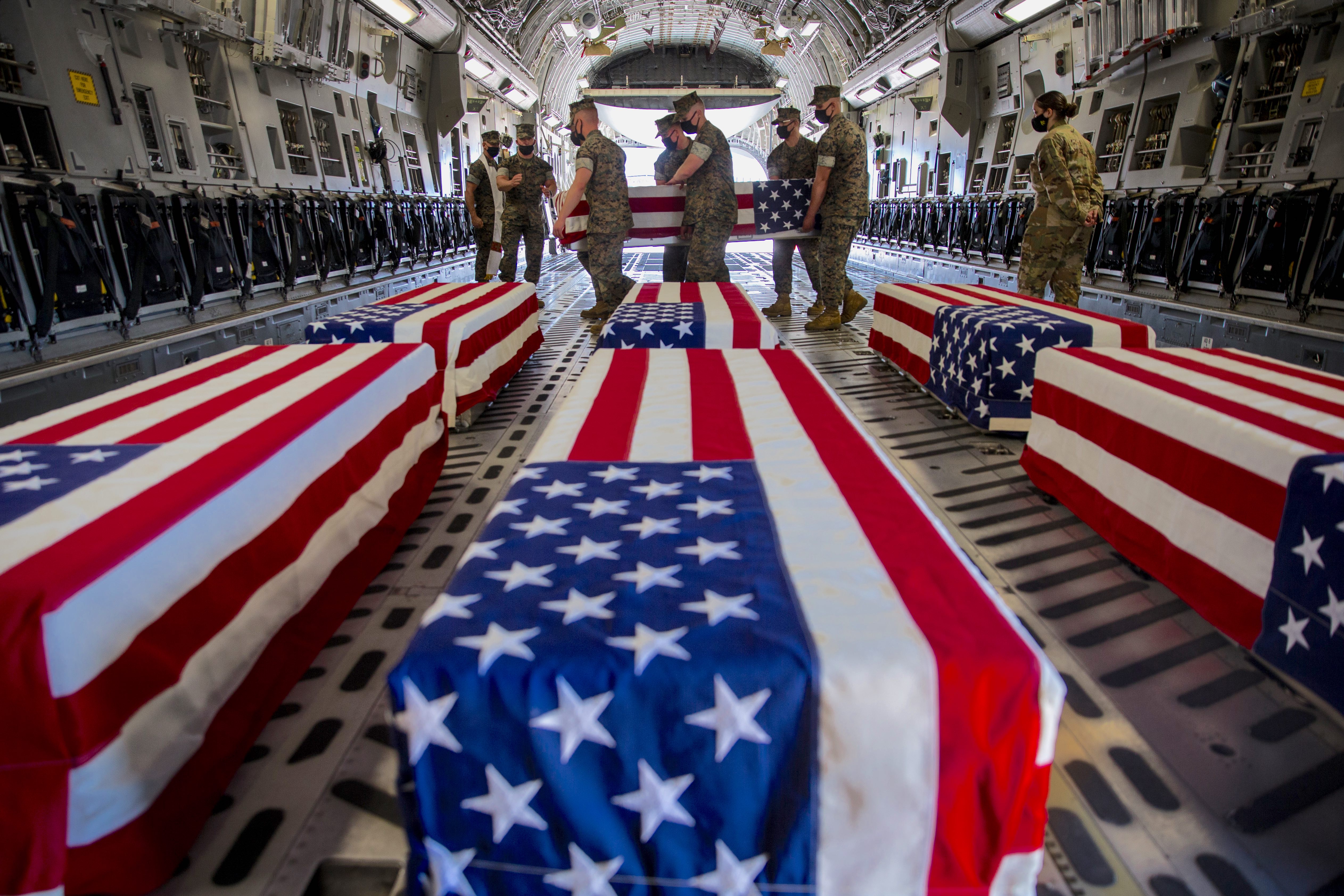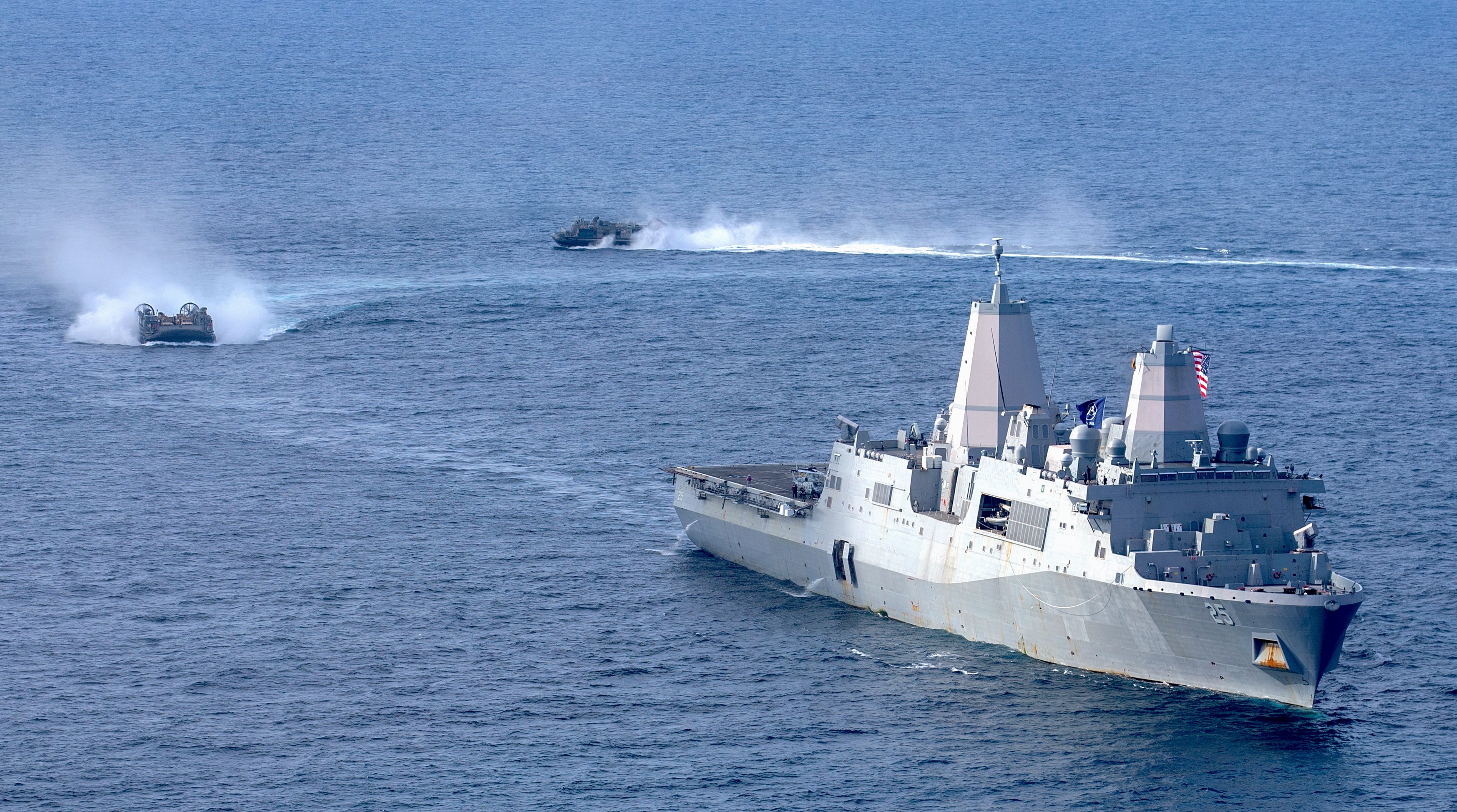
The Navy’s top civilian leader issued formal administrative punishments to five senior officers for their part in the fatal 2020 sinking of a Marine Corps amphibious assault vehicle that killed eight Marines and a Navy corpsman, officials confirmed Monday.
The action by Navy Secretary Carlos Del Toro, who became secretary in August 2021, is the latest fallout from the July 30, 2020 mishap that later led to the firings of the 15th Marine Expeditionary Unit and Battalion Landing Team 1st Battalion, 4th Marines, leaders. Three separate investigations found a “chain of failure” at nearly every level of command that included failures to enforce or ignorance of safety protocols and standard operating procedures for shipboard and waterborne operations.
Del Toro, citing various failures on their part and separate roles, issued secretarial letters of censure to:
- Retired Lt. Gen. Joseph Osterman, who was in command of I Marine Expeditionary Force on the day of the mishap. Osterman turned over command of the Camp Pendleton, Calif.-based I MEF just the following day, July 31, 2020, to Lt. Gen. Karsten Heckl.
- Col. Christopher Bronzi, commander of the 15th Marine Expeditionary Unit. Bronzi, a combat veteran and Silver Star recipient, was removed from command in March, eight months after the sinking. Most recently he has been assigned and working at Marine Corps headquarters.
- Lt. Col. Keith Brenize, who was in command of 3rd Amphibian Assault Battalion at Camp Pendleton at the time that his unit provided AAVs and the AAV Platoon for BLT 1/4, the 15th MEU’s ground combat element. The vehicles’ poor condition and the platoon’s lack of training were among problems cited by mishap investigators that ultimately led to the sinking. Brenize was ordered to a Board of Inquiry, held at Quantico, Va., in December and in February to show cause as to why he should be retained in the service. Brenize was attending top-level school at Quantico following completion of his command tour at 3rd AA Battalion in June 2020.
- Navy Capt. Stewart Bateshansky, who was commander of Amphibious Squadron 3 and served as commodore of the amphibious task force comprised of the USS Makin Island Amphibious Ready Group and the 15th MEU. Bateshansky had served as USS Somerset‘s (LPD-25) commander and executive officer before becoming commodore and is assigned to the Navy staff as the deputy for surface combatant modernization, maintenance and operations (N96).
- Navy Capt. John Kurtz, Somerset‘s skipper at the time of the sinking, handed over command to his replacement in September 2021. “Being your commanding officer has been one of the highlights of my career,” Kurtz said during the change-of-command ceremony in San Diego, according to a Navy news release. “It has been a true honor to serve with those aboard this vessel and represent what this ship means not just to us but to those who we honor. The crew of this ship will continue to achieve excellence in everything that they do, because I know they can. They have proven it time and time again. It is a bittersweet moment to leave, but I know this ship will continue onto bigger and better things.”
The AAV, carrying 16 personnel, took on water and sank in the Pacific while returning to amphibious transport dock USS Somerset (LPD-25) after an amphibious raid training on San Clemente Island. Killed in the mishap were: Navy Hospitalman Christopher Gnem, 22, of Stockton, Calif.; Cpls. Wesley A. Rodd, 23, of Harris, Texas, and Cesar A. Villanueva, 21, of Riverside, Calif.; Lance Cpls. Marco A. Barranco, 21, of Montebello, Calif., Guillermo S. Perez, 19, of New Braunfels, Texas, and Chase D. Sweetwood, 19, of Portland, Ore.; and Pfcs. Bryan J. Baltierra, 19, of Corona, Calif., Evan A. Bath, 19, of Oak Creek, Wisc., and Jack Ryan Ostrovsky, 21, of Bend, Ore.
“When leaders’ actions or inactions result in the loss of life or capital resources, the senior leadership of the Department of the Navy has a responsibility to determine the root cause and hold those accountable,” Del Toro said in a message sent to the Department of the Navy on June 2. “Following a thorough review of the command investigations into the AAV sinking, these officers received [secretarial letters of censure] due to their inadequate leadership and execution of their oversight duties.”
While Bronzi was fired from command and Brenize was administratively punished at the retention board, Del Toro told families in a notification that he “determined additional accountability measures were necessary,” according to part of the notification received by one of the families and shared with USNI News. The secretary also “determined” that Osterman, Kurtz and Bateshansky “bear some responsibility for the mishap and have held them accountable.”
Secretarial letters of censure are administrative actions, and the letter is placed in the officer’s official service record. Officers cannot appeal the censure, but they can rebut in writing and have it included in the record. The letter isn’t career-ending but is often seen as derogatory material for a promotion or assignment board to consider.

Some of the families have been holding out for what they say is accountability for the failures and negligence that they say led to their sons’ deaths and injuries to other Marines who survived the sinking.
In the notification to families, Del Toro indicated he had thoroughly reviewed the investigations into the mishap. Three were publicly announced and released: the command investigation into the mishap ordered by Marine Corps Forces Pacific and released in March 2021; the Marine Corps investigation ordered by the assistant commandant of the Marine Corps into the organization, compositing and training of the 15th MEU, completed in May 2021; and the Navy’s investigation ordered by the vice chief of naval operations and released in October 2021.
Peter Ostrovsky, whose son Jack Ryan died in the sinking, said he was surprised by the Navy secretary’s actions. He’s been awaiting word about the final dispositions for a series of boards of inquiry that were held at Camp Pendleton earlier this year for the former commanders of BLT 1/4, Bravo Company, 1/4, and the AAV Platoon commander. The final results of those BOIs have not been announced publicly by I Marine Expeditionary Force, based at Camp Pendleton.
“I think it’s the secretary of the Navy closing the gaps,” Ostrovsky said by phone. The issuance of the censure letters “is bigger on its face.”

For the Ostrovskys, who will bury their son’s remains at Arlington National Cemetery in September, the secretary’s decisions are just part of a larger accounting for all the failures on that day that the families, as well as the survivors, have been awaiting.
“This was bigger than nine lives. That whole company was at risk that day,” Ostrovsky said, noting how other AAVs in that return to ship grappled with water intrusion.
Ostrovsky, who sat in the hearing room earlier this year for the BOIs at Camp Pendleton, said he was beyond disappointed at what he heard in testimonies from the officers whose careers were on the line and who didn’t acknowledge the dire situation and dangers the Marines encountered during the training. One officer testified that he wouldn’t have done anything differently.
“It was not a success by any means,” Ostrovsky said. “It was a complete failure on their parts.”
Only one survivor testified at all the hearings – the driver of the ill-fated amtrac – but none of the other survivors testified, said Ostrovsky. “How about the platoon infantry commander who was aboard? He survived. What about the other survivors, the guys on the top of the vehicle who got washed off?” he said. “We walked about with the feeling that this was all an oversimplification” of what happened.
Ostrovsky said he was heartened to see Del Toro pointedly call out each officer for their failures as noted in the investigations. “They don’t pull any punches,” he said. “It’s kind of like bookends.”

“It’s obvious that the ALNAV (message) by the secretary 10 days ago was setting the stage for this,” he said.
Del Toro, on June 3, issued an all-hands message (ALNAV 036/22) titled “Leadership and Accountability” that included this statement: “When leaders’ actions or inactions result in the loss of life or capital resources or simply lower our standards, the senior leadership of the DON has a responsibility to determine the root cause and hold responsible persons appropriately accountable.”
He said he hasn’t been notified by the Marine Corps of the final decisions or dispositions of cases against the unit leaders, including former 1st Marine Division commander Maj. Gen. Robert F. Castellvi, who was removed as the Marine Corps inspector general, as well as BLT 1/4 commander Lt. Col. Michael Regner and Bravo Company commander Capt. George Hepler, the latter whose retention prospects were considered by separate boards of inquiry.
Several families have spoken out publicly about the AAVs’ poor conditions, the lack of waterborne and safety training and poor decision-making by unit leaders.
Even with limitations and problems in staffing and training due to COVID restrictions, Ostrovsky said, “they didn’t go the extra mile. They knew they had degraded equipment, but they didn’t do more. For all us families, we’ve always wondered why they didn’t do more.”
Knowing the AAV Platoon had received, and had to repair, so many AAVs that were in poor shape, the units still didn’t devote more time to safety and familiarization training. “Wouldn’t that have signaled to you that an egress situation would be more than likely?” he said. “They didn’t do enough.”





